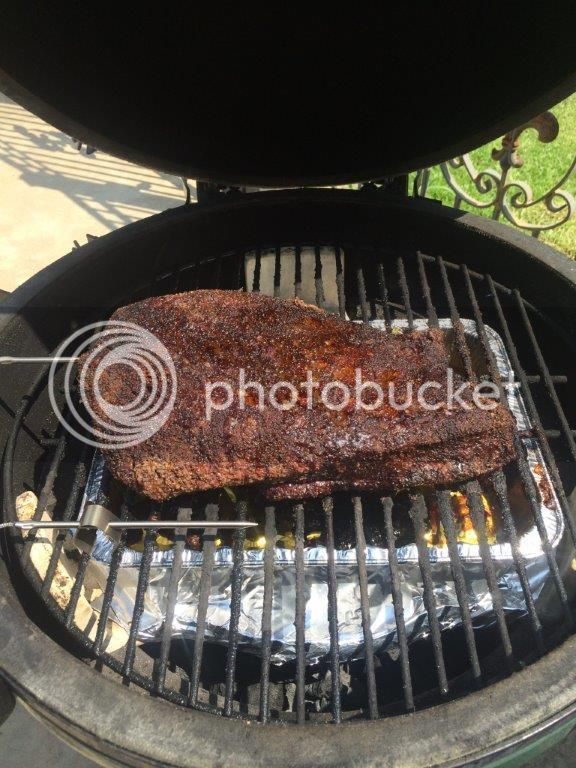While the DigiQ is a great gadget to have, I personally have no need for one as I use a Maverick ET-733 wireless thermometer with one probe one the meat and one on the grate. It has high/lo temperature alarms for both probes so I can go to sleep and just set the receiver on my nightstand and it wakes me up if my temperature gets out of my predetermined range. I’ve done overnight 15 hour cooks with this method and no issues. I also love this as when I’m doing a brisket for dinner I can get up at 3 AM and get everything going and the meat on by 4:30 and go back to sleep without fear of temp excursions.
+1. I have the high-que grate and love it. I have also replaced my daisy wheel with a Smokeware vented chimney cap and find it to be a big improvement.
I also like to tell this story when people ask why I like me egg to illustrate just how well it holds heat. Did a brisket cook for my in-laws one Friday as they were remodeling their kitchen and wanted something to eat for a while without having to worry about cooking. Since it wasn’t for dinner that Friday night I didn’t get up early to put it on so it wasn’t done until 9 PM. I pulled the brisket off and closed the lid and all vents to cool down the egg, pretty much standard shutdown procedure. That next day I was having some friends over for steaks that evening so around 3 that afternoon I went to get the egg ready. Opened the lid to take out the plate-setter and stir up the lump to let the ash fall through to the bottom. I wasn’t in a hurry so I just closed the lid, the top vent was completely closed and I had left the bottom vent open to go back later to finish sweeping up the ash and getting everything else ready. I got held up for about 30 mins and when I walked back out to check the egg the dome temp showed around 250F! Apparently the it had held enough heat from last night’s cook (which was only at 250F) to relight itself once it got air (only from the bottom vent) after 18 hours of being completely shutdown.
Since the OP asked for ideas, allow me to share my steak method.
Start with a rub-down of the steaks at least 45 mins before cook time with a healthy portion of the rub on each side. Longer doesn’t hurt and it typically rub the meat anywhere from 1 to 2 hours prior, but I have a 45 min minimum rule. The rub recipe is below (note, I don’t use all of the rub, but I like to make a bigger batch so I don’t have to do it each time.
6 tpsb kosher salt
3 tpsb brown sugar
1 tpsb coarse ground black pepper (I usually add more than this)
2 tsp garlic powder
1 tsp cayenne pepper (or to taste)
1/2 tsp ground white pepper
Pinch ground nutmeg
While the steaks are “marinating” I get the egg ready and stabilized around 200F direct cooking. When it’s time to start cooking I pull the steaks from the fridge and use a paper towel to dab any free liquid from the outside of both sides of the steak (although I might do some experiments where I don’t take any fluid off of the steak).
Once stable at 200-210F I put the steaks on for about 4-5 mins then flip for another 4-5 mins (depends on thickness and experimentation for how done you like your steak as well as the actual low cook temp), the dome is closed except to flip. Once this time is up I pull the steaks and set them aside, lightly covered in foil, but not sealed to keep them from cooking too much more. I like them to be around 70F-75F after this step.
Now comes the fun. Open both vents fully and wait… Once you’ve got lava in the coals and the dome is around 650F+, open the lid (I do this slowly just because) and drop the steaks for 1-2 mins per side (I usually do 2 mins per side based on historical results). I also close the dome during the sear, I’ve tried both method’s open and closed and just prefer it closed, less flare ups.
Once the sear is done I pull ‘em and give a 10 min rest while the sides are finish being prepped and plated. Your results may vary and this method is as much art as it is science, but try it out and see if you like it. It took me a while to get comfortable with it but if you don’t mind experimentation, I say try it out. Here are some pics because why not…
Lava…
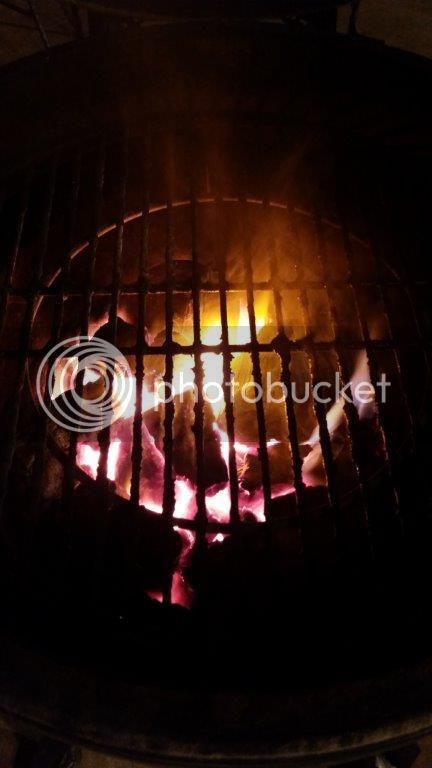
Steak searing…
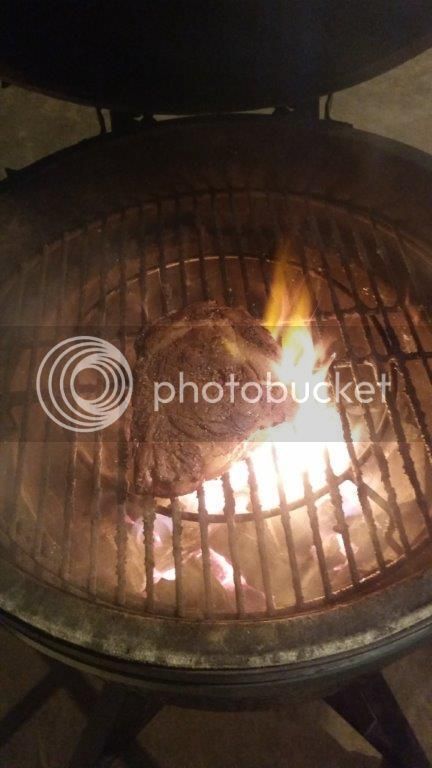
Finished…
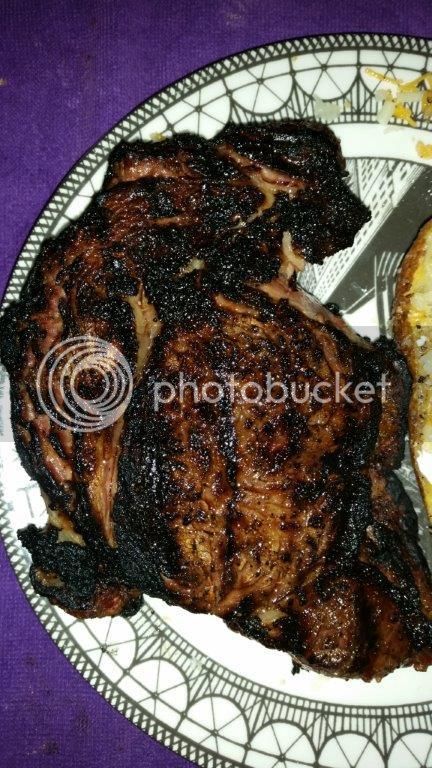
Center…
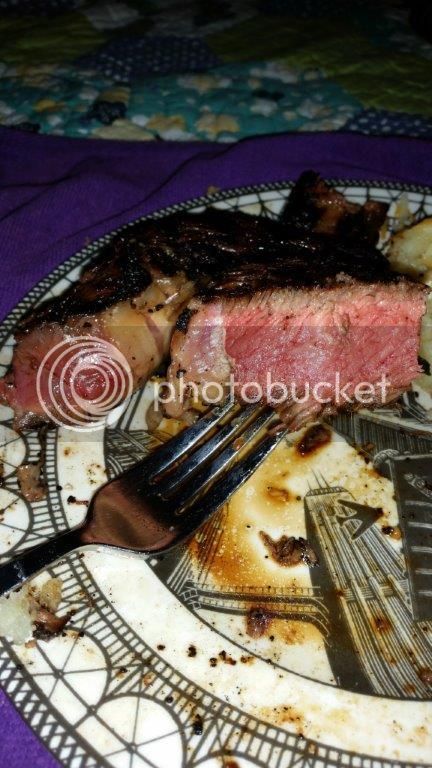
And a brisket…
